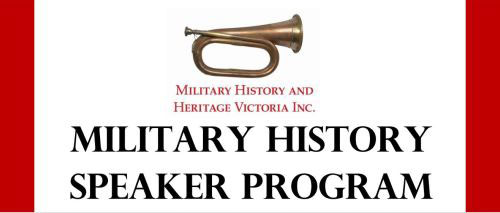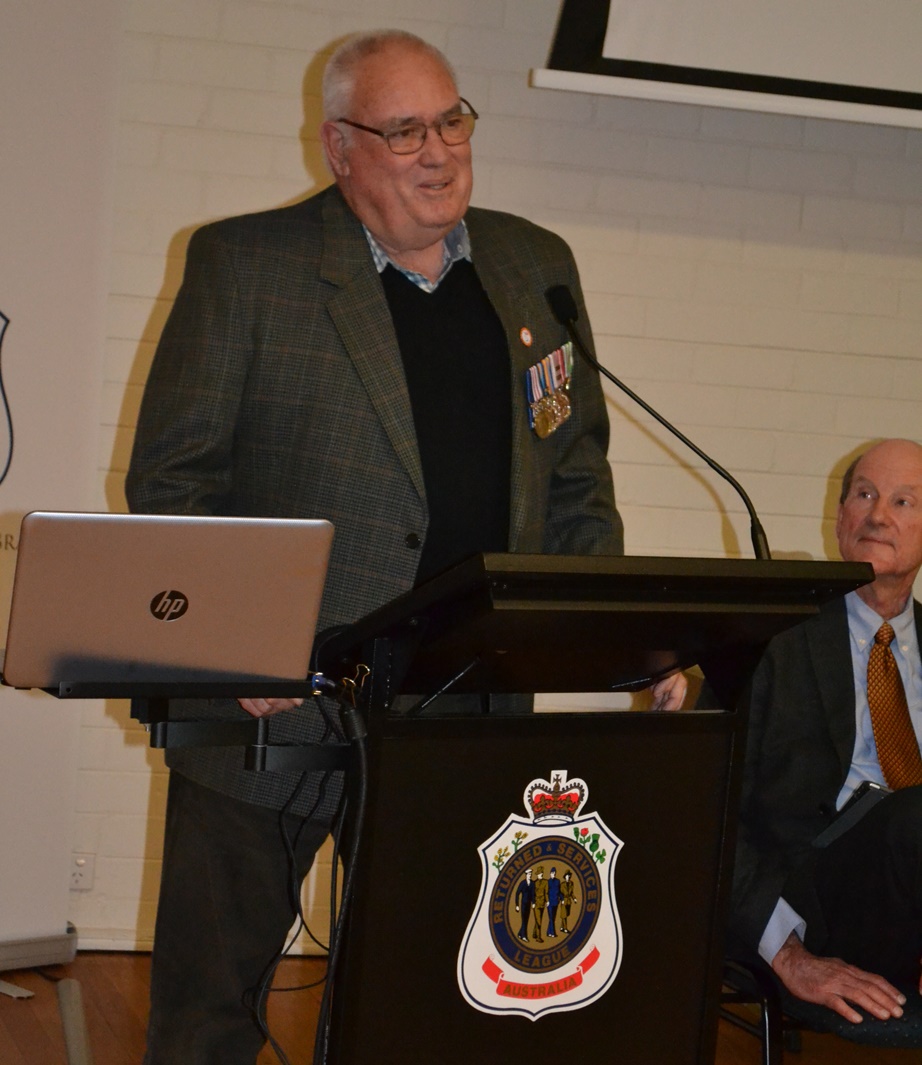This lively panel discussion held at the Pompey Elliott RSL August 10 2016 in front of some 50 people. 
The session was chaired by Dr Peter Edwards. In putting the war in context he revealed that 60,000 Australians served in the Vietnam War in Australia’s longest overseas conflict of the 20th century and the third largest and most costly war after the two world wars.

Some 520 Australians were killed and 3,000 wounded. The Australian force included all services. Its origin arose from the turmoil of de-colonisation and the cold war conflict between communism and the “free world.” The panel session was not, however, intended to cover the broader politico-military situation but to present a few of the 60,000 stories of serving men and women.

Lee Scully began by revealing he joined the army artillery force and switched to the RAAF serving as a transport pilot from 1961 to 1969 flying short take off and landing Caribou twin engine cargo planes out of a US Army Airfield. His cargo runs could involve just about any sort of cargo from stores, paratroopers, villagers and cattle as he swooped into remote strips and threw his propellers into reverse pitch to stop within 250 meters. Despite travelling at only 3,000 feet, his plane was only occasionally hit by ground fire, on one occasion one of his men was saved by the esky he was sitting. By night he and the other transport personnel lived in relative comfort in a nearby town.

Jim Archbold, MM, is a military policeman who won a Military Medal while working with the Americans. Jim was a young police officer on the beat in Melbourne when his conscription number came up. Posted to Vietnam he was surprised to be sent to the Provost Corps as a military policeman. As an MP he had a lot of autonomy and find himself almost anywhere doing anything. He escorted POWs to prison, went of curfew patrol clearing the Aussie soldiers out of bars and brothels – by and large his attitude was just to get them back to camp unless they caused trouble. On one occasion he escorted a local Vietnamese home through a hail of gunfire. After two years in Vietnam, he was posted back to the beat in Melbourne again.

Ken Dusting was a RAN signaller working in the escorts for the fast troopship HMAS Sydney. His ship ,the HMAS Duchess, was a WWII ship that had been brought out of mothballs and conditions were primitive. Unlike other ships of the time, the sailors still slept in hammocks, there was no air conditioning and the bridge was open to the elements. Most of the guns had been removed with the intention of replacing them with missiles but that hadn’t happened. Their run to Vietnam began at Manus Island. To avoid potential conflict from Indonesian and Russian submarines they swung around the top of the Philippines and approached Vietnam from the north. Time taken to unload and load in Vietnam was always tense as they were sitting ducks from mortars and rockets fired from the land, mines laid at night or from frogmen setting charges. Taking out the HMAS Sydney would have crippled Australia’s war effort as it was the only transport available. Other runs included to the west coast of Malaysia when on one occasion they had a tense passage through the Straits of Malacca as they were shadowed by an Indonesian gun boat with its guns “heated.”

Bruce Davies, MBE, is a decorated member of the Australian Army Training Team who served three tours in Vietnam. His first tour was with 1RAR during 1965-66 followed by two tours with AATTV. (worked closely with Vietnamese soldiers over three tours.) Bruce highlighted the difference between the US and Australian approach to war. In the first instance the structure of the different forces caused some issues. More than that was the difference in tactical attitudes. The Americans were very gung-ho using speed and lots of fire power. In comparison the Australians sneaked quietly through the jungle and were accused by the Americans of “pussy footing” around. He recalled the experience of an American Special Forces’ Commander (US Marine commander) briefing a force to “just go out and get them” and (the soldiers) being young and stupid enough we believed him. At that stage Bruce was assigned to an SF unit in Pleiku, the Central highlands.
The Americans were also (gung-ho) well-disposed with their equipment. Australia’s 1RAR was stunned to be offered 50 helicopters for an operation they were planning so long as they “gave them back.” During the war the US lost over 4,700 helicopters and 3,400 fixed wing planes.

Peter Edwards is a writer, historian and biographer, who has published extensively on Australian and international history and politics. He is currently an Adjunct Professor at Deakin University, Melbourne and has in recent years held professorial appointments at Flinders University in Adelaide and the University of New South Wales, Canberra. As a contractor or consultant, his major clients have included the University of Melbourne, the Department of Foreign Affairs and Trade, the Department of Defence, the Office of National Assessments, the Australian War Memorial, the National Library and the National Archives.
MHHV’s monthly Military History Speaker Program is convened by Dr Andrew Kilsby.
Click here for the full photo album.
Contact Brent D Taylor about this article.






